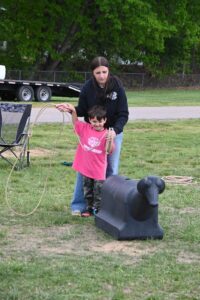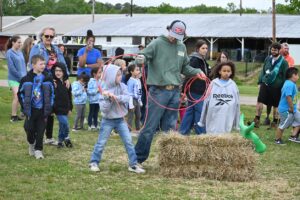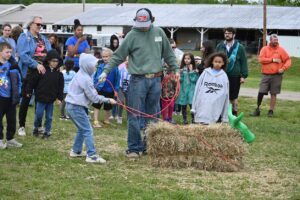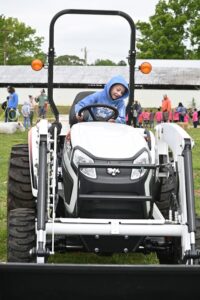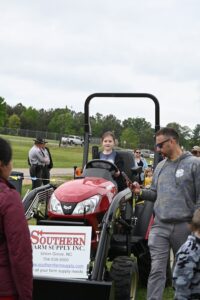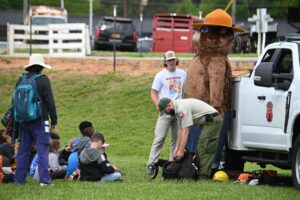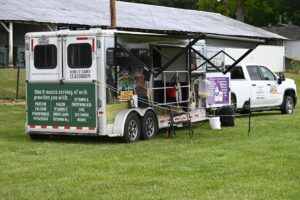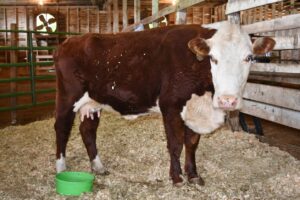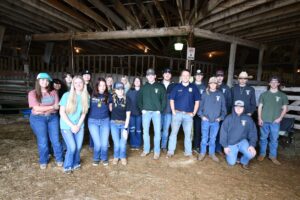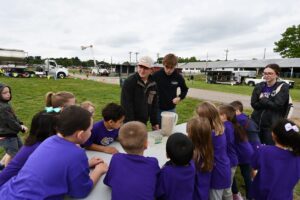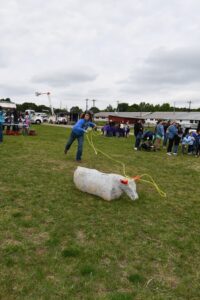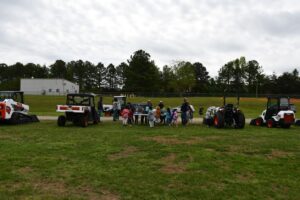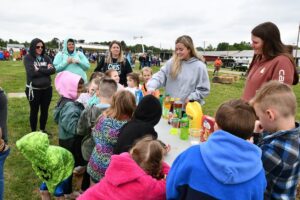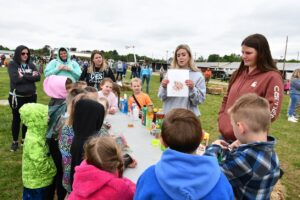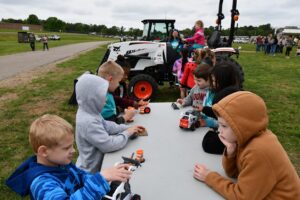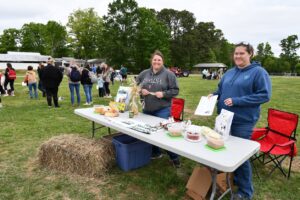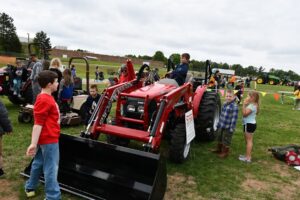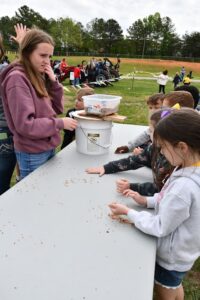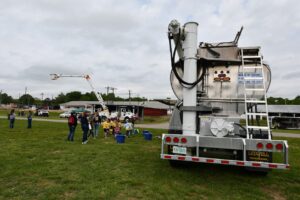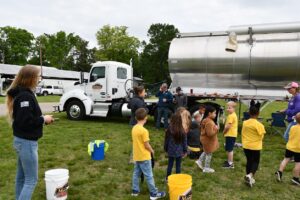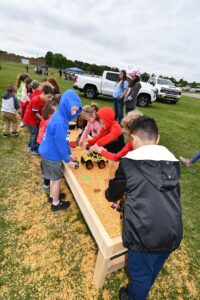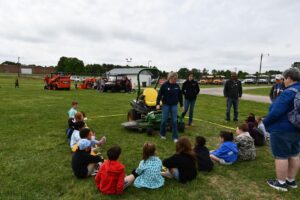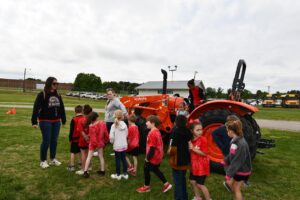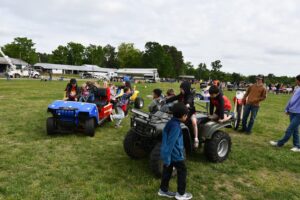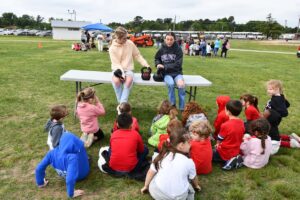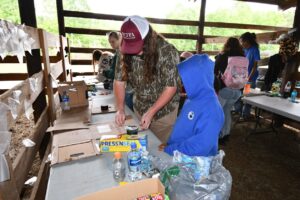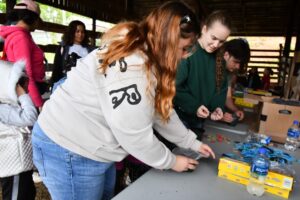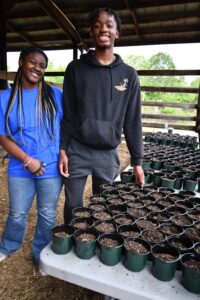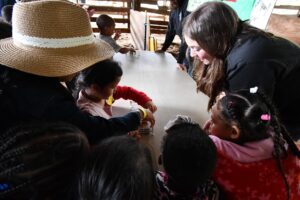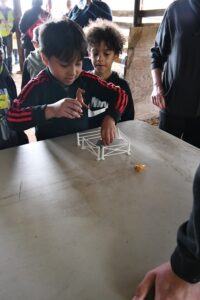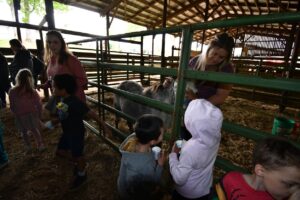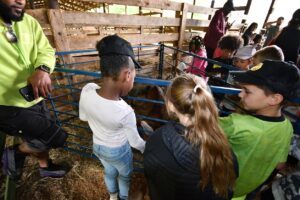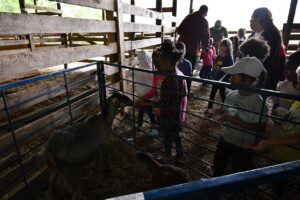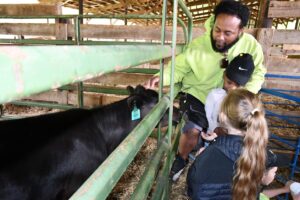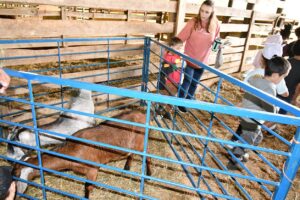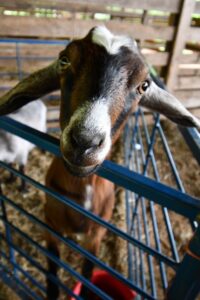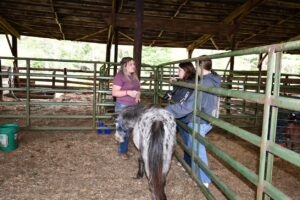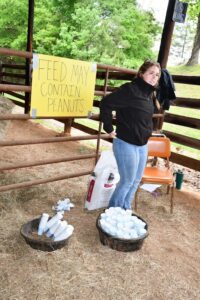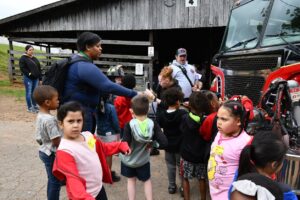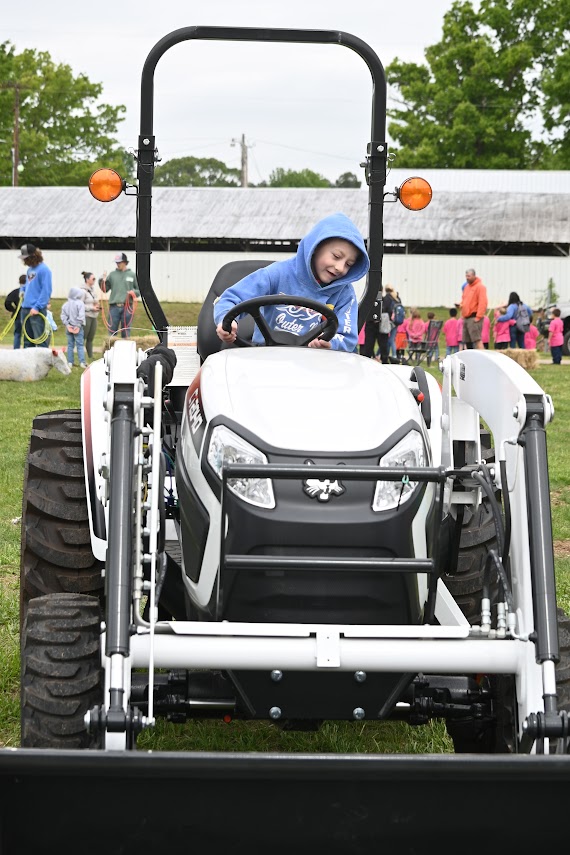
BY DEBBIE PAGE
Hundreds of bouncy 5-year-olds descended on the Iredell County Fairgrounds on Thursday and Friday to experience hands-on learning about the county’s agriculture industry and its important role in feeding, clothing, and sheltering their families.
Laura Elmore, Iredell County Extension Agent for agriculture, livestock, and field crops, said the 13th annual event hosted 1,200 Iredell-Statesville Schools students with the help of volunteers from all five high school Future Farmers of America groups and many community partners.
The FFA students led programs about animals and livestock, including cattle, sheep, horses and dairy cattle, and operated a petting zoo with goats, a pony, and cows. The kindergarteners also planted a sunflower seed, which they will take home to watch grow.
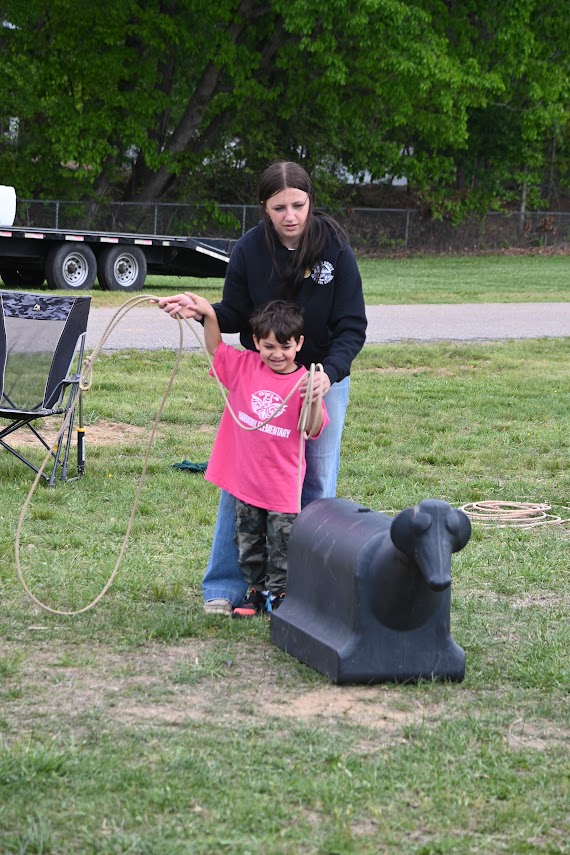 Other activities included learning to rope cattle, a tractor safety demo, tractor displays from area distributors, trucks from Randy Marion, Mountaire Farms’ feed truck and fun activities, Southland Dairy Association’s Mobile Milk Classroom, an Energy United electricity demonstration, beekeeping, an NC Forestry Service presentation, introduction to a fire engine from Troutman Fire and Rescue, and various safety and crop demonstration lessons.
Other activities included learning to rope cattle, a tractor safety demo, tractor displays from area distributors, trucks from Randy Marion, Mountaire Farms’ feed truck and fun activities, Southland Dairy Association’s Mobile Milk Classroom, an Energy United electricity demonstration, beekeeping, an NC Forestry Service presentation, introduction to a fire engine from Troutman Fire and Rescue, and various safety and crop demonstration lessons.
While having a blast at the various learning stations, the kids “are able to see the vastness of agriculture in Iredell County and how it touches their lives multiple times every day. I hope they understand just the sheer amount of it and how vital it is to their lives and its economic impact on the county,” Elmore said.
Elmore also hopes to inspire kids to pursue farming or other agriculture-related occupations. “We need it all. Hopefully, they’ll enjoy it and take something from today.”
Iredell County is number one in the state in total cattle, dairy cattle and milk production, sixth in poultry production, and in the top ten in grain crops, including hay and forage production.
Agriculture has a huge impact on the economy of North Carolina and the county, as well as the peripheral commerce around agriculture, including banks, farm equipment and tractor dealers, transportation, vehicles, processing, energy, and technology.
Elmore noted the high-tech nature of modern agriculture, which uses GPS guided tractors and other equipment, autonomous vehicles, drones, and biological and chemical analyses and research to improve crop production on smaller amounts of available land.
“We have such a loss of farmland and farmers,” Elmore explained. “We are having to do more with less. We are working to increase our efficiency and production on smaller pieces of land.”
Without farmers, there is no food in the grocery store, no cotton clothes to wear, and no timber to build houses, Elmore noted.
Bryant York, North Iredell High School agriculture teacher and FFA advisor, said the event began 13 years ago when a student had a vision to hold an event that would introduce the county’s children to the important role of agriculture. Her teachers agreed to support the event and, and “the kids took it and ran with it.”
The event requires months of planning to enlist community partners, plan exhibits, and get school and transportation logistics worked out.
York said the high school students get more out of the event than the kindergarteners.
“They get the leadership training. FFA is about growing leaders, and this is their opportunity to learn to advocate for agriculture, practice their public speaking, interact with people, and practice teamwork,” he said.
The high school students are excited to participate each year, providing the boots on the ground for their Iredell County Extension partner in putting on the large event. “It’s one of the highlights of their year.”
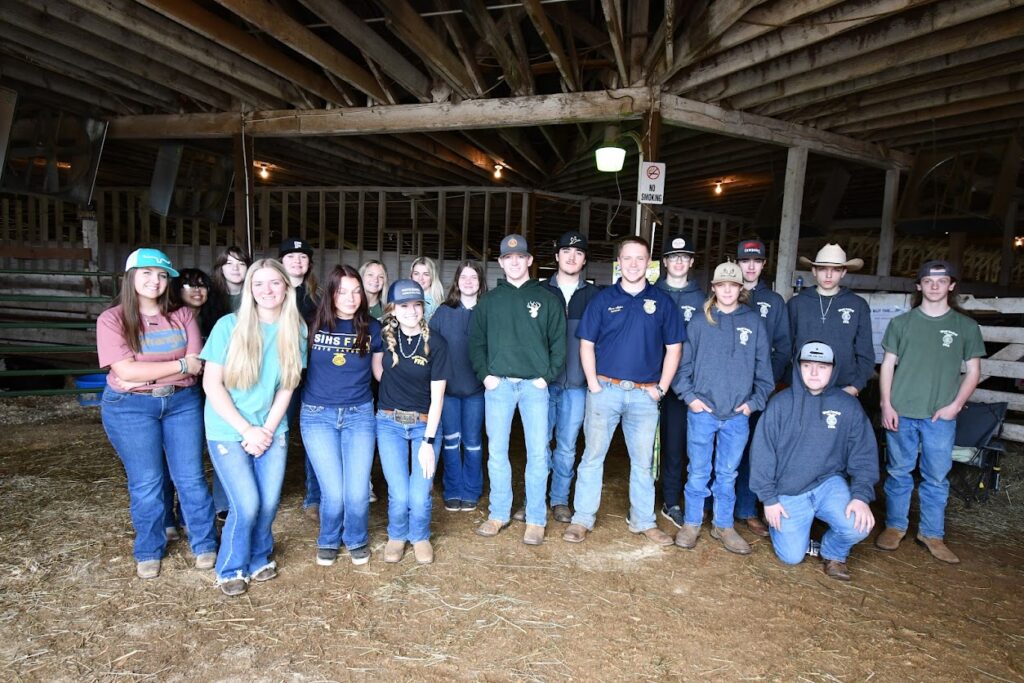
ECONOMIC IMPACT
Agriculture is the state’s number one industry. In 2022, the economic impact of North Carolina’s agriculture and agribusiness industry reached a new record of $103.2 billion, up from $92.9 billion the previous year. About one-fifth of the state’s workforce is employed in an agriculture-related occupation, according to Agriculture Commissioner Steve Troxler.
The Iredell County Economic Development Corporation reports that the county’s agriculture industry has an economic impact of $662 million, with cash gate receipts of $165 million benefitting the county.
Iredell County’s 367,488 total acreage has 133,346 acres, or 36 percent, dedicated to 1,055 farms, with an average farm size of 126 acres.
All of Iredell County farms are family owned, with 1 percent practicing organic farming.
In North Carolina, Iredell County ranks first in dairy production, first in all cattle (both beef and dairy), and corn silage production. In addition, Iredell County ranks sixth in poultry (layers), and fifth in hay production.
Soybeans, corn, wheat, rapeseed, cotton, viniferous grapes, strawberries, nursery crops as well as forestry and forest products are also produced in the county. Agribusinesses, including regional milling facilities and fertilizer manufacturers, also boost the county’s economy.
Iredell Ready reports that agribusiness systems pathways include occupations involved in the coordination of all activities that contribute to the production, processing, marketing, distribution, financing and development of agricultural commodities, plant and animal products, and other natural resources.
“Iredell County has a solid agricultural base which includes agriculture tourism, farmers markets, farm-based operations including mills and farm supply stores, and family-owned farms,” according to the organization.
To further showcase agriculture in the county, the Iredell County Board of Commissioners recently approved spending up to $16 million to upgrade the fairground complex, including an agricultural center, fixing the present buildings at the site, repairing the parking lot, and developing an outdoor farmers market for local producers to sell their products.
Funding for the project comes from $10 million in state funds allocated for the upgrade of the aging facility, with another $6 million coming from the county’s fund balance designated for the fairgrounds.

